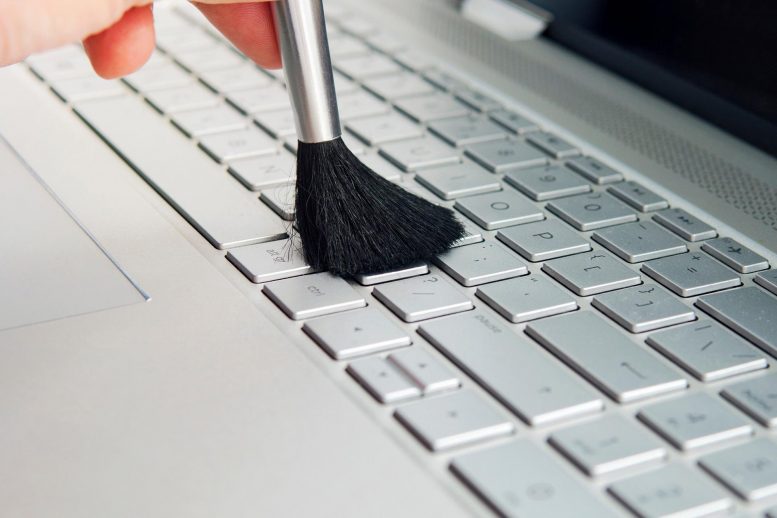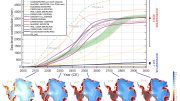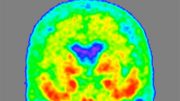
Genetic material from COVID-19 can survive up to a month in dust, a new study has found, offering a possible low-cost way to track outbreaks.
Finding does not mean virus can be transmitted via dust.
A study done in rooms where COVID-19 patients were isolated shows that the virus’s RNA — part of the genetic material inside a virus — can persist up to a month in dust.
The study did not evaluate whether dust can transmit the virus to humans. It could, however, offer another option for monitoring COVID-19 outbreaks in specific buildings, including nursing homes, offices, or schools.
Karen Dannemiller, senior author of the study, has experience studying dust and its relationship to potential hazards like mold and microbes.
“When the pandemic started, we really wanted to find a way that we could help contribute knowledge that might help mitigate this crisis,” said Dannemiller, assistant professor of civil, environmental and geodetic engineering and environmental health sciences at The Ohio State University.
“And we’ve spent so much time studying dust and flooring that we knew how to test it.”
The study, published on April 13, 2021, in the journal mSystems, found some of the genetic material at the heart of the virus persists in dust, even though it is likely that the envelope around the virus may break down over time in dust. The envelope — the crown-like spiked sphere that contains the virus’s material — plays an important role in the virus’s transmission to humans.
The study offers another non-invasive avenue for monitoring buildings for COVID-19 outbreaks, especially as more people are vaccinated and return to communal spaces.
Municipalities and others have tested wastewater to evaluate the prevalence of COVID-19 in a given community — gene copies and fragments of the virus live in human waste, and by testing wastewater, local governments and others can determine how widespread the virus might be, even if people are asymptomatic.
Dust monitoring could offer similar understanding on a smaller scale — say, a specific nursing home, hospital or school.
“In nursing homes, for example, you’re still going to need to know how COVID is spreading inside the building,” said Nicole Renninger, lead author of the paper and an engineering graduate student in Dannemiller’s lab. “For surveillance purposes, you need to know if you are picking up an outbreak that’s going on right now.”
For this study, the research team worked with the crews responsible for cleaning the rooms at Ohio State where students who tested positive for COVID-19 were isolated. They also collected samples from two homes where people who tested positive for COVID-19 lived. They gathered vacuum bags of dust from the cleaning crews and from the homes.
The researchers also tested swabs collected from surfaces in the rooms.
They found genetic material from the SARS-CoV-2 virus — the virus that causes COVID-19 — in 97% of the bulk dust samples and in 55% of the surface swabs.
The cleaning crews sprayed a chlorine-based disinfectant in the rooms prior to cleaning; the researchers believe that disinfectant destroyed the envelope and/or capsid — the outer coat surrounding the virus — likely defanging it for transmission.
The research team tested the samples when they arrived at the lab, shortly after the rooms were cleaned, then tested the samples again weekly. After four weeks, the virus’s RNA did not significantly decay in the vacuum bags.
“We weren’t sure that the genetic material would survive — there are many different organisms in dust, and we weren’t sure we’d see any viral RNA at all,” Renninger said. “And we were surprised when we found that the actual RNA itself seems to be lasting a pretty long time.”
Testing dust to monitor for COVID-19 outbreaks would likely be most useful for smaller-scale communities with a high-risk population — a nursing home, for example, Dannemiller said. Testing indoor dust is also likely less expensive at that scale than testing wastewater or all individuals directly on a routine basis.
“We wanted to demonstrate that dust could be complementary to wastewater for surveillance,” Dannemiller said. “Wastewater is great for a large population, but not everybody sheds the virus in feces, and you have to collect wastewater samples, which not everyone wants to do. People are already vacuuming these rooms, so dust may be a good option for some groups.”
Even before this study was published, Dannemiller said the researchers presented their findings to an industry group that represents maintenance and cleaning staff, with a recommendation: “If they can wait at least an hour or more after a person leaves the room to clean, they should,” she said, citing previous studies of viral viability on other materials and in aerosols.
Reference: “Indoor Dust as a Matrix for Surveillance of COVID-19” by Nicole Renninger, Nicholas Nastasi, Ashleigh Bope, Samuel J. Cochran, Sarah R. Haines, Neeraja Balasubrahmaniam, Katelyn Stuart, Aaron Bivins, Kyle Bibby, Natalie M. Hull and Karen C. Dannemiller, 13 April 2021, mSystems.
DOI: 10.1128/mSystems.01350-20
Other Ohio State researchers who worked on this study include Nick Nastasi, Ashleigh Bope, Samuel Cochran, Sarah Haines, Neeraja Balasubrahmaniam, Katelyn Stuart and Natalie Hull. Kyle Bibby, an associate professor of engineering at the University of Notre Dame, and Aaron Bivins, a postdoc in his group, also contributed.









… how would COVID-19 react to a ultra sound and other types of sounds…